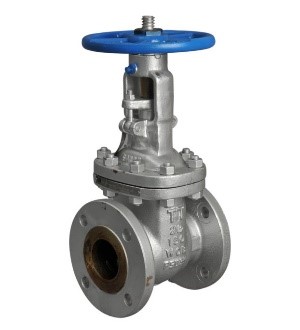Description
Description:
| Gate valves are essential components in fluid control systems. They regulate fluid flow by utilizing a gate or wedge-shaped disc that moves perpendicular to the flow direction. This design makes them suitable for both liquid and gas applications, depending on the valve’s material composition.
Newcomen Engineering Valve Company will design and manufacture all type of Gate valves to meet customer requirements. These valves will be available in a range of sizes, pressure classes, and materials, tailored to specific process needs. |
Material:
Body and Bonnet Material:
Forged Gate Valve
- Carbon Steel:
- ASTM A105: A common choice for general-purpose applications.
- Alloy Steel:
- ASTM A182 F1: Suitable for higher temperature and pressure applications.
- ASTM A182 F9: Offers good resistance to corrosion and oxidation.
- ASTM A182 F11: Provides excellent resistance to high temperatures and pressures.
- Stainless Steel:
- ASTM A182 F304/304L: Offers good corrosion resistance and is suitable for a wide range of applications.
- ASTM A182 F316/316L: Provides excellent resistance to corrosion, particularly in chloride-containing environments.
Cast Steel Gate Valve
- ASTM A216 WCB: A common choice for general-purpose applications.
- ASTM A216 WCC: Suitable for higher temperature service
- Alloy Steel:
- ASTM A217 WC9: A common choice for high-temperature service.
- ASTM A217 WC6: Offers good strength and toughness at elevated temperatures
Trim Material:
- Forged Gate Valve Trim Materials:
- 304/304L: Good general corrosion resistance.
- 316/316L: Excellent resistance to chloride-containing environments.
- Stellite: A family of cobalt-based alloys known for their exceptional hardness and wear resistance. Commonly used for severe service applications.
- Monel: A nickel-copper alloy with excellent corrosion resistance, particularly in seawater and other corrosive environments.
- Cast Gate Valve Trim Materials
- Stainless Steel: Similar to forged valves, 304/304L and 316/316L are common choices.
- Cast Iron: Can be used for less demanding applications.
- Ductile Iron: Offers improved strength and toughness compared to gray iron.
Operating Temperature:
- The maximum temperature the valve can withstand without compromising its performance
Sealing Material:
- Soft Seat: Rubber or elastomer-based materials for tight sealing at low pressures.
- Metal-to-Metal Seat: For high-pressure and high-temperature applications, providing durability and resistance to extreme conditions.


Reviews
There are no reviews yet.